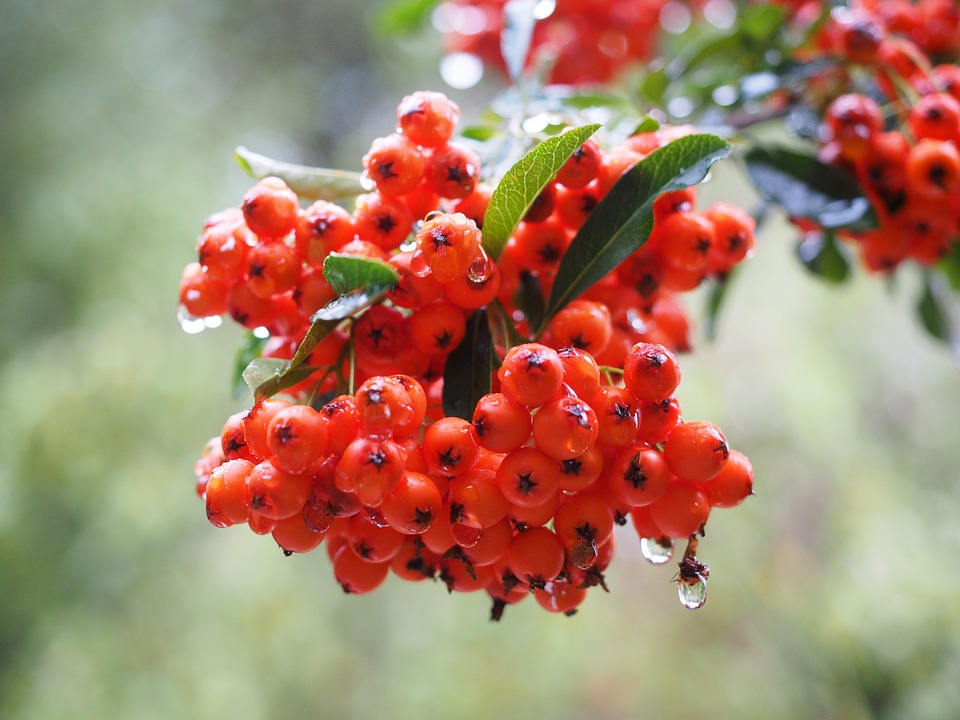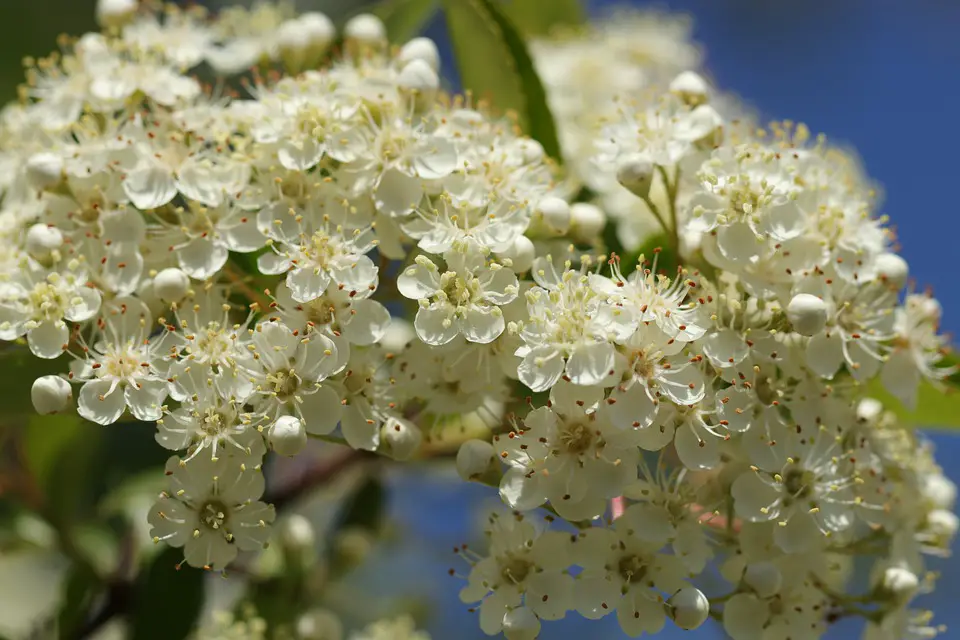Gardening is all about the love of nature. People who love to observe and enjoy nature and its marvelous creations are involved in it. As many people love gardening they also love to welcome different birds to their garden. If you also want to attract birds, then you need to learn how to plant Pyracantha because the plant is famous for this reason.
Pyracantha Plants

Is pyracantha an evergreen?
Pyracantha that is also known as firethorn is an evergreen shrub. It is known for its usefulness in the garden in many aspects. This shrub has red, yellow, and orange-colored berries which make your garden very appealing and eye-catching.
Along with having beautiful berries, it has flowers that are white in color contrasting with the green leaves which create an amazing scene in the garden. These berries attract a lot of birds to the garden, which will surely make your place lively.
Also, pyracantha has long and dense thorns that’s why its name is firethorn. These thorns act as a great place for birds to build their nests. These shrubs can be trained and pruned along with walls and fences, or they can be planted as hedges against animals within the boundaries of the garden.
Why Pyracantha Plants?
You might be wondering what a plant with thorns has to do in your garden. This shrub must be kept out. You are right. But nature has created the universe in a complete balance. The same is the case with pyracantha. Its benefits are engraved in its obvious properties.
First of all, it increases the decoration of the garden. In the bloom season, these plants have a bundle of white flowers, in contrast with the green leaves which creates a great scene. Also, the fruits which are yellow, orange, or red in color are showstoppers.
The fruits of Pyracantha are usually in bundles. The fruits attract a lot of birds. During the days when birds don’t get a lot of food out there, these berries would be the main source of these birds. Get ready to welcome your new guests. The long and dense thorns of this plant are the best place for the birds to build a nest.
Also, the berries of the pyracantha plants attract a number of insects. These insects are quite useful for the growth of your garden. They will help in the process of pollination in the garden. It increases the possibility of having a great fruit season.
Does Pyracantha need support?
Moreover, this plant grows up to 15 feet, but most of the time it is found 12 feet high. Also, it spreads around 6 feet. This makes it good for fencing. If you plant this shrub at the edge of the garden this will act as an independent hedge effectively.
Its dense thorns will keep the harmful species away from the garden, as it is a member of the rose family. This is one of the main qualities, due to which this shrub is preferred. It can grow along the walls and act as a fence, along with being able to grow independently.
Growing Pyracantha Plants
Can pyracantha be grown from seeds?
How do you start a pyracantha?
Pyracantha can be grown from the seeds as well as can be propagated from the stem. Here as we want you to enjoy the whole process of planting, we will go for the process of planting pyracantha plants from seeds.
Growing Pyracantha Plants from Seeds

The pyracantha seeds should be put in the process in the autumn or in the early spring. So, plan according to the season.
Getting the Seeds
How do you propagate a Pyracantha plant?
You can get the pyracantha seeds from any gardening store. Try to get the seeds of orange or red pyracanthas because yellow is not commonly available. Clean the seeds and take the unhealthy ones out. Then soak the seeds in water for about 24 hours.
Actually, pyracantha seeds have deep dormancy in them. They need to complete this dormancy in the cold state so that they can germinate well. This stage can be achieved by putting it in the freezers for 3 months.
Germination of Pyracantha Seeds
Get the pot in which you have to put the seeds. Add the composted matter with soil and sand in equal proportions. Moist the mixture with water or spray. Then mix the seeds of pyracantha in the mixture in such a way that these seeds are not close to each other.
Then cover the pot with a plastic bag keeping the space for airflow. Now you can write the date on a plastic bag to ensure the accuracy of the time for the pretreatment. Keep the pot in the fridge for 12 weeks at 4 Celsius or 39F.
Keep up with the moisture during this period of pretreatment.
Planting the Pyracantha Seedlings
Now as the pretreatment is complete, get the pots for the plantation of seeds. Add the mixture of composted organic matter and sand into the pots. Moist the mixture and then sow the seeds of the pyracantha after you have done pretreatment. Sow them 5mm deep.
You need to keep watering and temperature adequate for germination and be careful about high temperatures. After 1- or two-weeks pyracantha seeds will germinate. Check all the seedlings if they have germinated properly or not.
Keep the watering and light schedule of pyracantha plants in mind. You will need to take care for 1 to 2 years. In one year, it grows up to 15 to 30 cm. Keep it weed-free. It requires bright sun, but not high temperatures. After 2 years you can transplant the plant to the spot of your choice.
Transplanting Pyracantha Plants
Selecting the Right Spot for Plantation
Selection of the right spot is important. Pyracantha does well in the bright sun. Otherwise, it produces more leaves when kept in shade. So, choose the site where there is good exposure to the sun. The soil should be well-drained for these plants. Its pH should be between 5.5 to 7.
The right spot is also important, because of the thorn. If you want to plant near a wall, plant it slightly away from the wall. If you want to plant it near a fence, check the soil and light availability. Don’t plant it near the doors or at the place where anyone has to pass. Its thorns can cause damage.
Transplanting the Plants
Dig the hole twice as deep as the root ball of the plant. Be careful while putting plants in the hole. Get the plant and keep it in a hole as deep as it was in a container. Add the soil and gently press it around the plant. Add the organic fertilizer in a small quantity.
Keep enough space of 5 to 7 feet between the plants, as it has to spread around. Water the plant enough till it gets established. It needs enough water in the early days.
Taking Care of Pyracantha Plants
Taking care of pyracantha plants is not so difficult. It just needs adequate care in the early stages and then it can survive on its own.
First of all, the watering schedule needs to be good and adjusted well. Because it needs enough water to establish its roots in the early days. If leaves are dropping it means it is not getting enough water. If leaves are pale there is overwatering. So, make it moderate. Not much, not less than required.
Then comes the training of the plant. If you are planting it against the wall, then tie it to the wall when it is grown. When you want it to be near the fence, then move the branches of the shrub into the fences so that they can completely cover the fence. If it is independently planted, then leave it as it is.
Add mulch to the plant. It will keep up with the moisture and will help the plant survive in the frost season. These plants don’t need much fertilizer. It can grow on a mixture of composted material and sand. If you want to add fertilizers add the balanced one.
Pruning of Pyracantha Plants
Can I prune pyracantha in winter?
Technically you can prune the plant whenever you want. But prune it wisely. It is pruned in the mid springs, mid falls, and early winters.
Prune the pyracantha shrubs with care. Cut the leaves which are covering the fruits so that they can get enough sunlight. Select the branches and leaves according to conditions and don’t prune the one which is previously pruned. Don’t prune more than one-third of the plant.
Pests and Diseases
There are not very common pests for these pyracantha shrubs. Lace bugs and spider mites are some common attackers. Treat them accordingly with the consultation of a horticulturist. If you have plans to use the fruit, then use the organic methods to get rid of pests.
Watch for the scab and fire blight. Fire blight causes plants to die. Scab is one type of fungi. You can treat it with fungicide.
If you have children and curious pets in the house, plant the pyracantha plants at your own risk. Its fruits are usually not eaten because it is too much bitter.
This plant will not only attract the birds and insects for pollination, but it will also expand your interest in the love of nature.
You might also like

